Welcome, reader, to our Lucky Search 123 removal guide. The following instructions will aid you in removing the unwanted software from your PC.
If you have lately been harassed by never ending streams of ads and you’ve one day opened your browser only to find that it looks a bit that different from the way you last saw it – chances are your computer has been infected with a browser hijacker called Lucky Search 123. A hijacker typically integrates with your Chrome, Firefox or other browser and applies certain modifications to it, such as changing the homepage and/or default search engine, which results in your search queries often being redirected to unfamiliar promotional pages. These setting usually remain this way for as long as the hijacker is on computer and no matter how hard you try to change them back – it always fails. To make matters even more frustrating, you’re also forced to see numerous online ads that seem nearly impossible to avoid. Luckily, if you’re seeking for a way to remove the pesky program, we have just the thing. Below this article you will find a removal guide with detailed instructions that will show you exactly how to solve this problem.
How did I get infected?
This is usually the first question people ask themselves when they find certain unwanted programs on their computer and can’t recall ever allowing them to be there. There are many different ways you could have landed Lucky Search 123, but the number one most common distribution method for software like this is through program bundling. This is a sneaky, but fully legal tactic employed by software developers to ensure their software gets downloaded and installed by different people. And exactly because it’s kind of sneaky, users often have no idea of what they’ve installed. How does this work? Picture this: you’re surfing the web, looking for a free program to help you, say, edit your photos. You finally find one on an open source download platform or some file sharing site and without further ado you go ahead and download the desired program. After this, however, you need to install it in order to be able to use it – that’s logical. So, you proceed to run the setup wizard and in the beginning you are asked to choose between one of two setup options: default or custom/advanced. You don’t trust your technical skills all too much or just don’t feel like you want to be filling your head with mumbo-jumbo, so you just go for the easier default settings. And that’s your mistake. That is precisely what the developers were counting on, because by going with the default settings you basically grant them permission to do whatever they want and in this case it’s to install all contents of the bundle, including Lucky Search 123. So, what’s the alternative? Well, you only had two options, so if it’s not one, then it’s the other: the custom settings. Always go with that and you will be able to deselect whatever software you don’t want on your PC.
Is Lucky Search 123 a virus, though?
No, it most assuredly is not. Viruses are malicious pieces of programming designed to harm you, your files or your machine. If you want a good example of a virus, think in terms of ransomware, Trojans horses and spyware. Those are the real bad guys. However, there are certain shady aspects to browser hijackers that go beyond getting on your nerves. For example, in order for them distribute ads that you’ll be more likely to click on (that’s how the developers make their money), the program can spy on your browsing patterns and record them. Invasive much? Yup, that’s what we thought. Also, you know those dangerous viruses we mentioned? Well, one of the most successful means of distribution for them are things called malvertisements, which are basically ads that have been contaminated with malware. Hackers use this method very often and it’s becoming and ever bigger problem. It’s very possible that you could land on a compromised ad and then end up contracting malware, which you may sorely regret. The simplest thing in avoiding such a turn of events is not interacting with any of the ads you see online. There is no way for you to determine which ad is legit and which has a virus hidden in it simply by looking at it, so it’s best you just have nothing to do with them altogether.
Remove Lucky Search 123
I – Uninstallation
- Use the Winkey+R keyboard combination, write Control Panel in the search field and hit enter.

- Go to Uninstall a program under Programs.

- Seek the unwanted software, select it and then click on Uninstall
- If you are unable to spot Lucky Search 123, search for any unrecognized programs that you do not remember installing on your PC – the unwanted software might disguise itself by going under a different name.
II – Safe mode and revealing hidden files
III – Cleaning all your browsers
- Go to your browser’s icon, right-click on it and select Properties.

- Go to the Shortcut tab and in the Target make sure to delete anything written after “.exe”.

- Now, open your browser and follow the instructions below depending on whether you are using Chrome, Mozilla or IE.
- Chrome users:
- Go to your browser’s main menu located in the top-right corner of the screen and select Settings.
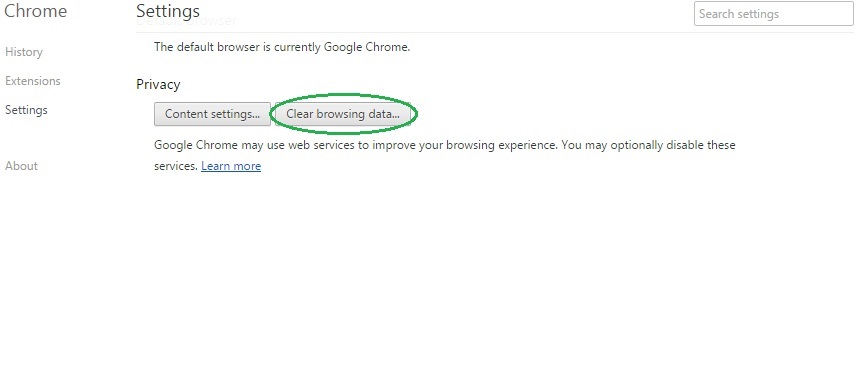
- Scroll down, click on Show Advanced Settings and then select Clear browsing data. Just to be sure, tick everything and clear the data.
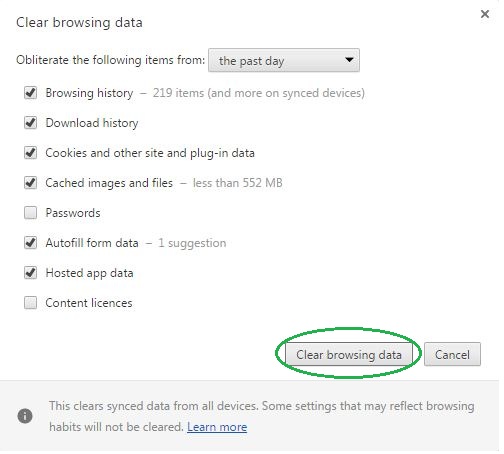
- Now, in the left pane, go to Extensions and look through all extensions that are integrated within your browser. If you notice any suspicious add-on, disable it and then remove it.
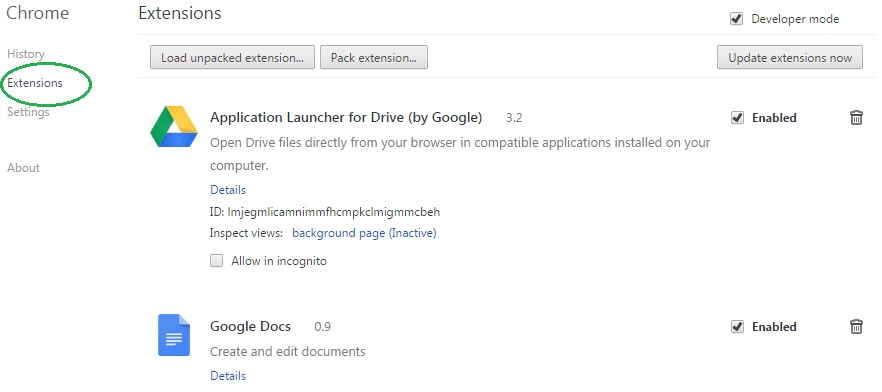
- Firefox users:
- Similarly to Chrome, go to the main menu and select Add-ons and then Extensions.
- Remove any suspicious browser extensions that you may have even if they do not have the name Lucky Search 123 on them.
- IE users:
- Go to Tools and select Manage add-ons.

- Click on all add-on types from the left pane and check if there is anything suspicious in the right panel. In case you find anything shade, make sure to remove it.
IV – Removing Shady processes
- Go to your start menu, type Task Manager in the search field and from the results open View running processes with Task Manager.

- Thoroughly look through all processes. The name Lucky Search 123 might not be there, but if you notice any shady looking process that consumes high amounts of memory it might be ran by the unwanted program.
- If you spot the process ran by Lucky Search 123, right-click on it, open its file location and delete everything in there. Then go back to the Task Manager and end the process.

V – DNS check
- In the start menu search box write View Network Connections and open the first result.
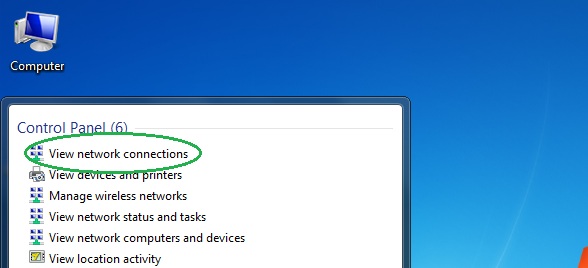
- Right-click on the network connection you are using and go to Properties.

- Select Internet Protocol Version (TCP/IPv4) and click on Properties.

- If Obtain DNS server addresses automatically is not checked, check it.
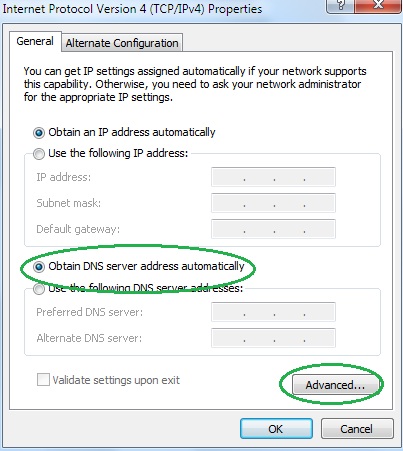
- Go to Advanced and select the DNS If there is anything in the DNS server addresses field, remove it and click OK.

- Click OK on the rest of the opened windows.